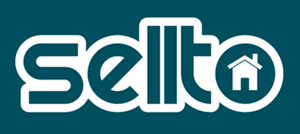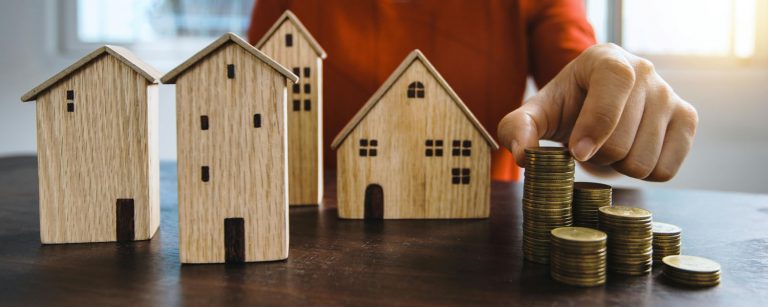As homeowners age, financial needs often evolve. For those over 55, a reverse mortgage—also known as a lifetime mortgage—can offer a way to access the equity tied up in their property without the need to sell. This financial product allows homeowners to remain in their homes while unlocking funds for various purposes, such as supplementing retirement income, funding home improvements, or covering unexpected expenses.
In this article, we’ll delve into what a reverse mortgage is, how it works, its benefits and drawbacks, and how SELLTO can assist if selling the property becomes part of the estate administration process.
Part 1: Understanding Reverse Mortgages
What Is a Reverse Mortgage?
A reverse mortgage is a loan available to homeowners aged 55 or older, enabling them to convert part of their home equity into cash. Unlike traditional mortgages, there are no monthly repayments; instead, the loan is repaid when the homeowner sells the property, moves into long-term care, or passes away. The amount that can be borrowed typically ranges from 40% to 60% of the property’s value, depending on factors such as the homeowner’s age, the property’s value, and interest rates.
There are two primary types of reverse mortgages:
- Lifetime Mortgage: The most common form in the UK, where the homeowner retains full ownership of the property. Interest is added to the loan balance, and repayment is due when the homeowner sells the property or passes away.
- Home Reversion Plan: Involves selling part or all of the property to a reversion company in exchange for a lump sum or regular payments. The homeowner can continue to live in the property rent-free until they move into long-term care or pass away.
How Does a Reverse Mortgage Work?
When a homeowner takes out a reverse mortgage, the lender provides a lump sum, regular payments, or a combination of both, based on the equity in the property. The homeowner is not required to make monthly repayments; instead, the loan, along with accumulated interest, is repaid when the property is sold, typically upon the homeowner’s death or move into long-term care.
The loan amount is secured against the value of the property, and interest is added to the loan balance over time. It’s important to note that the homeowner remains responsible for maintaining the property, paying property taxes, and covering insurance costs.
Part 2: The Pros and Cons of Reverse Mortgages and How to Plan Ahead
Reverse mortgages can be a powerful financial tool for older homeowners, but they are not suitable for everyone. Understanding both the benefits and potential drawbacks is crucial before deciding whether this route makes sense. In this section, we’ll break down the key considerations and explore strategies for managing your home equity while protecting your financial future.
The Advantages of a Reverse Mortgage
- Access to Cash Without Monthly Payments
One of the biggest appeals of a reverse mortgage is the ability to access the equity in your home without having to make monthly repayments. This can be particularly helpful for retirees on a fixed income who need additional funds to cover living costs, healthcare expenses, or home improvements. By converting property equity into cash, homeowners can maintain financial flexibility without altering their day-to-day budget.
- Remain in Your Home
Unlike selling your home to release funds, a reverse mortgage allows you to stay in your property. For many, this emotional and psychological stability is a key benefit, as it avoids the disruption of relocating and maintains a sense of familiarity in retirement.
- Flexibility of Payment Options
Homeowners can often choose how to receive funds: a lump sum, regular monthly payments, or a combination of both. This flexibility enables tailored financial planning based on individual needs, such as paying off outstanding debts, supplementing pension income, or creating an emergency fund.
- No Credit Checks Required
Because a reverse mortgage is secured against the property, lenders generally do not require credit checks. This can make it more accessible to retirees who might not qualify for other types of loans due to limited or fixed incomes.
- Tax-Free Cash
Funds received from a reverse mortgage are typically tax-free, which means they do not affect your income tax or pension entitlements. This is a significant advantage over other forms of income supplementation in retirement, which could be subject to taxation.
The Drawbacks and Risks of Reverse Mortgages
While there are clear benefits, reverse mortgages also carry potential drawbacks that homeowners must consider:
- Interest Accumulation
Interest on a reverse mortgage accrues over time and is added to the loan balance. Because no repayments are made during the homeowner’s lifetime, the total amount owed can grow substantially, reducing the equity available to beneficiaries or for future financial needs.
- Reduced Inheritance
Since the loan is repaid from the sale of the property, the amount available to leave to heirs is diminished. For some families, this reduction in inheritance is a significant consideration and could influence decisions about whether to pursue a reverse mortgage.
- Impact on Means-Tested Benefits
Although the cash received from a reverse mortgage is tax-free, it could potentially affect eligibility for means-tested benefits. Homeowners should review their specific circumstances and consult a financial adviser to understand how this might impact their benefits.
- Responsibility for Property Maintenance
Even with a reverse mortgage, the homeowner remains responsible for property upkeep, insurance, and taxes. Failure to maintain the property could lead to complications with the lender and, in extreme cases, repossession.
- Complexity and Legal Considerations
Reverse mortgages can be complex financial products. Understanding the terms, interest calculations, and repayment conditions is essential to avoid unexpected financial consequences. Professional advice is highly recommended before entering into such an agreement.
Planning Ahead: Is a Reverse Mortgage Right for You?
A reverse mortgage can provide financial relief, but careful planning is essential. Consider the following steps:
- Assess Your Long-Term Financial Needs
Evaluate your retirement budget, anticipated expenses, and any outstanding debts. Determine how much additional income you may require and whether a reverse mortgage will meet those needs without creating undue financial pressure in the future.
- Compare Alternatives
While a reverse mortgage can be useful, other options may also be available, such as downsizing, using savings, or accessing a pension lump sum. Weighing all options ensures you choose the solution that best aligns with your financial and personal goals.
- Calculate the Costs Over Time
Understand how interest accrues on the reverse mortgage and estimate the total repayment amount over your expected lifespan. This helps clarify the impact on the equity in your home and potential inheritance.
- Consult Financial and Legal Experts
Before committing, seek advice from professionals who specialise in retirement planning and property finance. They can help ensure that the reverse mortgage is structured appropriately and that you fully understand your obligations and rights.
How SELLTO Can Be an Alternative or Complementary Solution
For some homeowners, selling the property outright may provide a more straightforward path to accessing funds. Working with a guaranteed buyer like SELLTO allows you to:
- Access Cash Quickly: Receive a fair, cash-based offer and complete the sale in a matter of weeks.
- Avoid Interest Accumulation: Unlike a reverse mortgage, selling outright avoids the compounding interest that reduces future equity.
- Simplify Financial Planning: Selling provides immediate liquidity, enabling debt repayment, investment, or funding retirement without ongoing obligations.
- Reduce Stress and Uncertainty: The process is transparent, with no estate agent fees or lengthy property chains, making it ideal for retirees seeking certainty and control.
Case Study Example
Consider Mary, a 70-year-old homeowner who needed extra funds for medical expenses and home modifications. She initially considered a reverse mortgage, but after reviewing her options, she decided to sell her property to a guaranteed buyer. By doing so, she accessed her equity immediately, eliminated any future interest accrual, and simplified her retirement finances. She was able to move into a smaller, more manageable home and have a comfortable cash reserve for her remaining years.
Conclusion of Part 2
Reverse mortgages offer a way to unlock property equity while remaining in your home, providing flexibility and tax-free funds. However, they come with long-term costs, interest accumulation, and reduced inheritance potential. Planning carefully, evaluating alternatives, and seeking professional guidance is essential to ensure this financial product aligns with your retirement goals.
Part 3: Choosing Between a Reverse Mortgage and Selling Your Property
For many homeowners, deciding how to access the equity in their property during retirement can be a daunting choice. Part 1 and Part 2 explained what a reverse mortgage is, its benefits and drawbacks, and key planning considerations. In this final section, we’ll explore how to make the decision that best suits your circumstances, including when selling your property through a trusted buyer like SELLTO may be the smarter option.
1. Factors to Consider When Choosing a Reverse Mortgage
When considering a reverse mortgage, homeowners should evaluate:
- Current Financial Needs: Do you need a lump sum for immediate expenses, or ongoing income to supplement your pension?
- Future Plans: Will you remain in your home for the foreseeable future, or might you consider moving or downsizing?
- Impact on Inheritance: A reverse mortgage reduces the equity left in your home, which may affect what you leave to beneficiaries.
- Interest Accrual: Understand how interest will accumulate over time and the total repayment amount, ensuring it doesn’t compromise your financial security.
Careful consideration of these factors helps determine whether a reverse mortgage aligns with your long-term retirement goals or if alternative strategies might be more suitable.
2. Selling Your Property as an Alternative
Selling your property outright can be a simpler, faster way to access equity, especially if:
- You Want Immediate Cash: Unlike a reverse mortgage, which accrues interest over time, selling provides a lump sum that can be used immediately.
- You Prefer Certainty: Selling avoids the long-term complexities and financial obligations associated with reverse mortgages.
- You’re Ready to Downsize: Moving to a smaller, more manageable property can reduce expenses and provide greater flexibility in retirement.
Working with a guaranteed buyer like SELLTO ensures a fast, stress-free sale with no chains, no estate agent fees, and clear timing for accessing funds. This approach is particularly attractive for retirees who want certainty and control over their finances.
3. Comparing Reverse Mortgages and Property Sale
| Feature | Reverse Mortgage | Selling Property |
|---|---|---|
| Access to Funds | Gradual or lump sum; tax-free | Lump sum immediately |
| Repayments | None until property sale | None (loan-free ownership post-sale) |
| Equity Remaining | Decreases over time due to interest | Entire equity converted at sale |
| Inheritance Impact | Reduced due to loan repayment | Depends on how proceeds are used |
| Flexibility | Stay in home | Move to new home |
| Risk | Interest accumulation; complex terms | Market value fluctuations; timing of sale |
This comparison helps homeowners understand the trade-offs, ensuring informed decisions that suit both financial and lifestyle goals.
4. Steps to Make the Right Decision
- Evaluate Your Retirement Goals
Consider your lifestyle, travel, family support, and future plans. Understanding what you want from retirement is the first step in deciding between a reverse mortgage or selling. - Calculate Long-Term Costs
Estimate total repayment on a reverse mortgage, including interest accumulation, and compare it to the proceeds you could access by selling the property. - Consider Alternative Options
Downsizing, renting, or using other savings might provide sufficient funds without taking on additional financial products. - Seek Expert Guidance
Speak with financial advisors or retirement specialists to ensure you fully understand the implications of each choice. - Plan for Contingencies
Think about healthcare costs, emergency expenses, and unexpected life events. Your decision should provide financial security under varying circumstances.
5. Case Study: A Practical Decision
Consider Robert, a 72-year-old retiree with a home valued at £300,000. He was exploring a reverse mortgage to supplement his pension income. After calculating the interest accumulation over ten years, he realised that much of his home’s equity would be eroded. By choosing to sell through a guaranteed buyer, he accessed a lump sum immediately, cleared debts, and purchased a smaller property mortgage-free. Robert was able to create a financial cushion for healthcare and leisure without worrying about loan repayment or interest.
6. Why SELLTO Is a Strong Option for Retirees
- Fast, Guaranteed Sale: Receive a fair cash offer quickly, avoiding months of uncertainty.
- No Estate Agent Fees: Maximises funds available for retirement.
- Clear Timing: Choose the completion date that suits your retirement plans.
- Peace of Mind: Remove the burden of managing interest accumulation or complex loan terms.
For many retirees, selling outright offers simplicity, financial certainty, and the freedom to move forward without long-term obligations.
Conclusion
Deciding how to access the equity in your home during retirement is a major financial choice. Reverse mortgages can provide flexibility and tax-free income, but they come with long-term costs, interest accumulation, and reduced inheritance. Selling your property, particularly through a guaranteed buyer like SELLTO, can be a simpler, faster, and more predictable alternative, providing immediate funds, debt relief, and a fresh start for your retirement.
By evaluating your goals, understanding costs, and considering professional guidance, you can make a choice that secures financial stability and allows you to enjoy the retirement you’ve earned — with confidence, clarity, and peace of mind.




